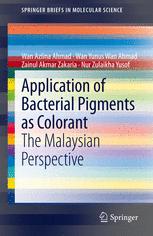

Most ebook files are in PDF format, so you can easily read them using various software such as Foxit Reader or directly on the Google Chrome browser.
Some ebook files are released by publishers in other formats such as .awz, .mobi, .epub, .fb2, etc. You may need to install specific software to read these formats on mobile/PC, such as Calibre.
Please read the tutorial at this link: https://ebookbell.com/faq
We offer FREE conversion to the popular formats you request; however, this may take some time. Therefore, right after payment, please email us, and we will try to provide the service as quickly as possible.
For some exceptional file formats or broken links (if any), please refrain from opening any disputes. Instead, email us first, and we will try to assist within a maximum of 6 hours.
EbookBell Team

4.3
38 reviewsEnvironmental concerns regarding continuous use of synthetic dyes saw a revival in the demand for natural dyes as natural dyes exhibit better biodegradability and generally have a higher compatibility with the environment. However, one of the limitations on the use of natural dyes or pigments is the low extraction yield factors (a few grams of pigment per kg of dried raw material). Therefore, the exploitation of other biological sources such as fungi, bacteria and cell cultures offers interesting alternative. Microbial pigments such as from bacterial origins offer the advantage in terms of production compared to pigments extracted from vegetables or animals, due to its simple cell and fast culturing technique. This book offers interesting insight into initial works carried out to demonstrate the potential use of bacterial pigment as colorant for various applications.